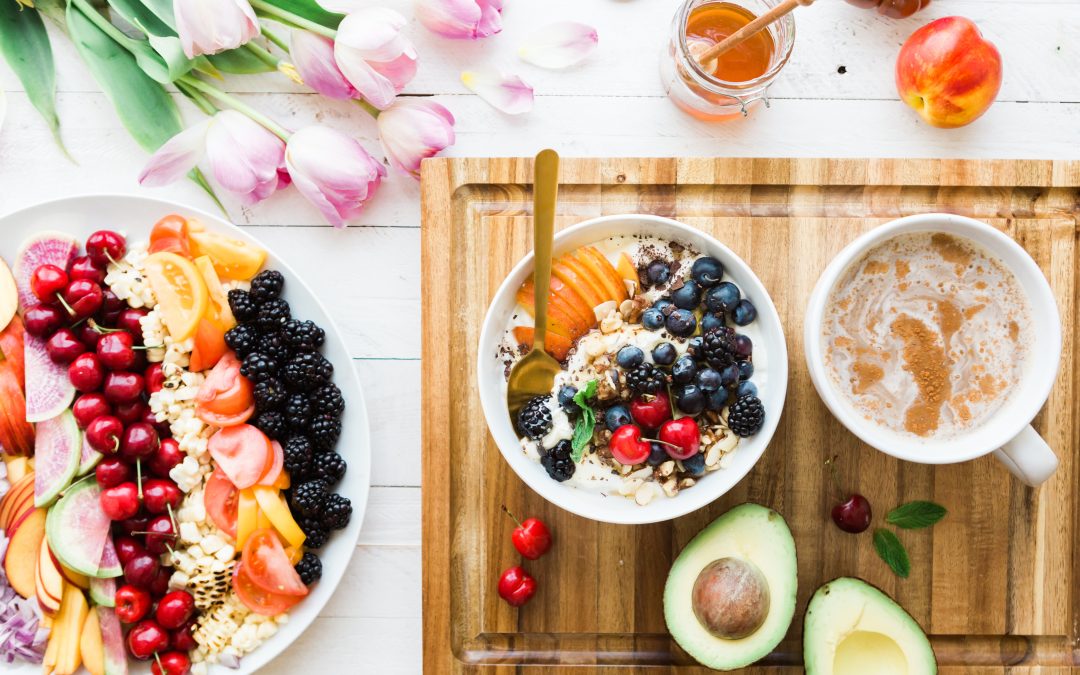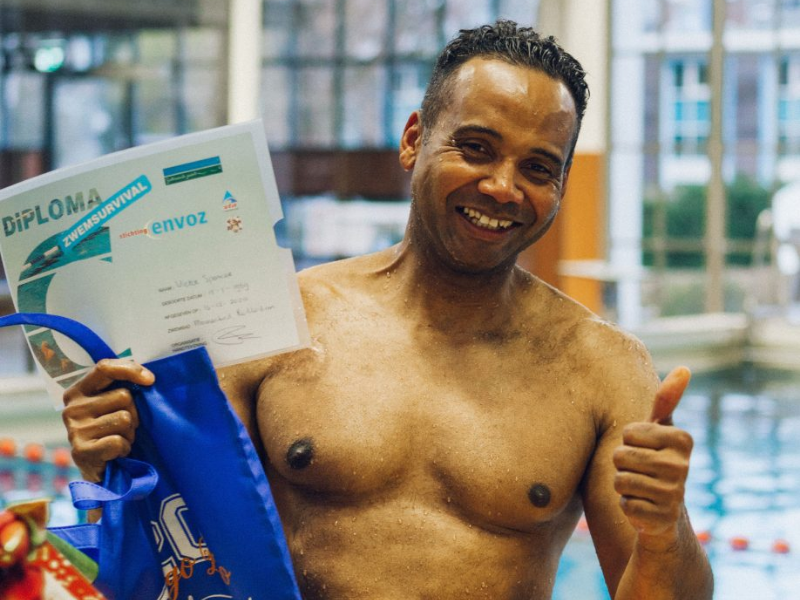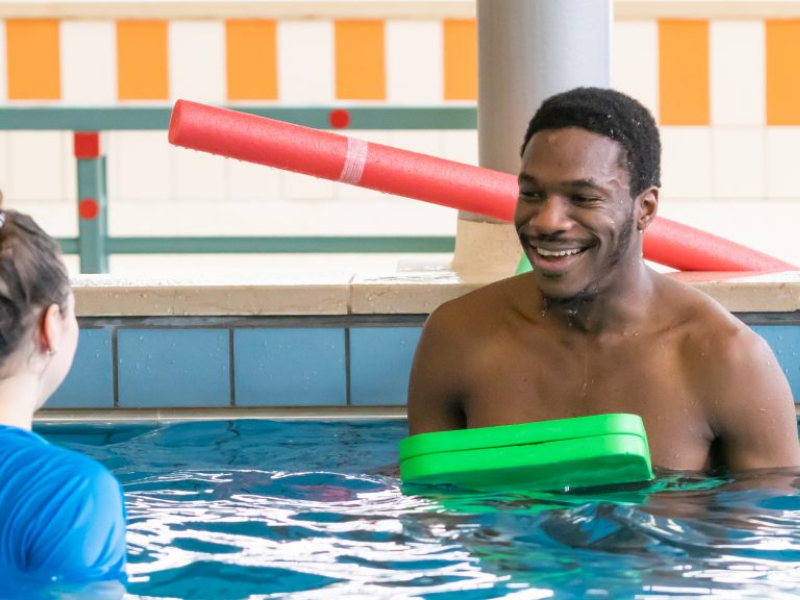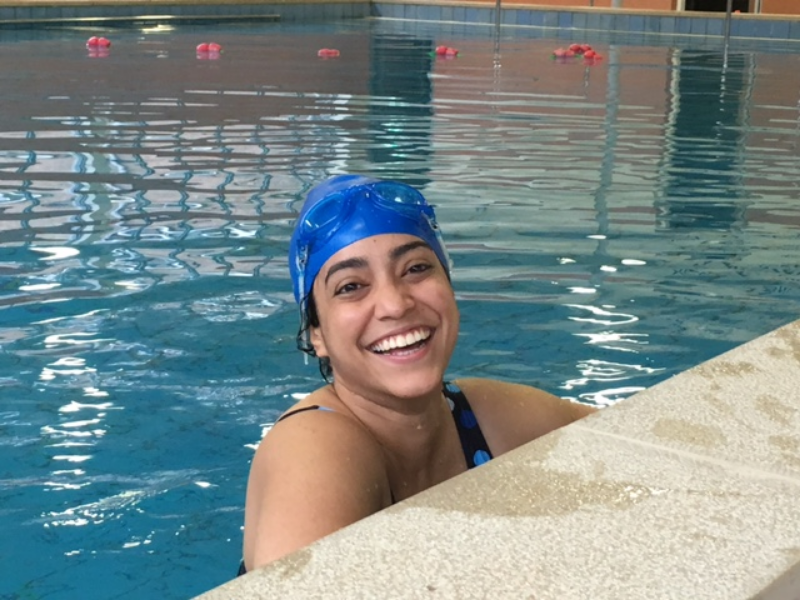How do swimmers eat:
Schedule specific tips
Specific pre/post exercise meal planning
Planning meals around your swimming schedule can be a crucial part of making or breaking your learning experience. Eating the wrong thing or at the wrong time before practise might give you cramps and not enough energy, while eating wrong afterwards might mean waking up sore and otherwise unrested.
Just like in other sports, when you eat is just as important as what you eat. The hour before you swim is crucial in establishing the nature of each practise, and food can be split thus into pre and post exercise foods based on their benefits (see https://www.livestrong.com/article/190016-meal-plans-for-swimmers/ ).
Large protein-filled meals with chicken/beef/pork are great for after practise to give your body the fuel it needs to repair muscles tissue, while carbs (pasta, crackers, and/or fatty nuts like almonds) can be a great way of giving you the sustainable energy you need before practise. Below I will give some hypothetical examples to give you an idea.
Rush day (can’t eat any food until right before practise):
in this case I would eat a light snack before involving bread, crackers, beans, and/or cheese with light protein and a bottle of water (ex. a cheese sandwich with some sausage)-after practise I would immediately eat a banana, drink more water, and eat a heavier meal with a substantial protein (chicken breast or nuts if you’re vegetarian) and vegetables.
Plenty of time before practise:
Here you can eat a larger meal more than an hour before practise, but I would still snack on the above carbs and/or snacks (linked above) before hand and drink lots of water. If you’re still hungry afterwards then feel free to have a bigger meal afterwards but, even if you don’t, have a banana and some sort of protein
In both cases water is essential. Bananas are helpful after practise because of their ability to stay cramps and lactic acid (the reason you feels to dead after practise) build up, and can help you feel more refreshed the next morning. A helpful plus is electrolytes, though use them in moderation. This vitamin usually can be found in drinks and helps to replace what you lose through sweating during your exercise.
There is a common myth that you cannot eat within an hour of your exercise in all sports. Through my experience of playing waterpolo, marathon swimming, and competitions, I’ve come to realize that the important point that this mantra raises is instead self-awarness in personal eating practises and realistic demands from you body, so don’t cram your nutrience in all at once before practise, give your body a consistent, natural, supply of energy throughout the day and it will do what it can for what ou’re asking of it.
Keep in mind that you are asking a lot of it, so artificial stimulants (like processed sugars) undermine its own true abilities.
Other articles you might like
Diploma system
Your Personal Swim Coach lessons are structured around the Dutch ABC Diploma curriculum. Find out how it works and what all of them entail!
Floating in swimming
The science of swimming. Do people float better in salt water in the sea, or fresh water in the swimming pool? And other questions around floating are answered in this article.
Our adult swim classes
Your Personal Swim Coach will help you become a more confident you, a stronger, fitter and healthier you, a happier, care-free you and ensure your success in learning to enjoy and feel safe in and around water!
Water Intro
Are you unable to swim, scared or challenged? Have you taken lessons before and failed? Or it has been a long time ago?
Stroke Introduction
You are comfortable in shallow water but are not able yet to perform all 4 basic strokes. This level requires you to have passed the introduction program, or you are able to perform a swim a backcrawl, and a single backstroke (froggy leg).
Sport class
Take Your Swimming to the Next Level with Our Sport Class!
For those who have earned their official swim diplomas or advanced swimmers looking for new challenges—our Sport Class is designed for you!




